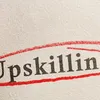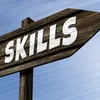It's rare for tipping points to emerge overnight. That's a truism for technology, business and economic lifecycles. Such changes usually occur in increments, happening slowly but surely, and making their way to a stage of inflection when change is inevitable. They may catch participants and spectators by surprise, but the signs are always there if one watches closely.
The juncture that our nation's economic cycle is presently in is of course then an aberration, given that the last year has presented an unexpected, unpredictable set of crossroads which couldn’t be foreseen earlier.
As clichéd as it may sound, there has been no precedent that leaders can use as an example to rebase strategy while they look to exist in the pandemic in the new and coming year. That is simply because the past holds no lessons that serve as benchmarks to use for the future.
A recent McKinsey study indicates that while COVID-19 changed the way people live and work overnight, what is unknown is how subsequent health and economic crises will evolve, and what mindset changes will arise as a result.
Specifically, the study proceeds to say that it is certain that to emerge successfully from the current crisis, organisations will have no choice but to nurture their employees’ digital, cognitive, social and emotional adaptability and resilience skill sets. This is something that no economic downturn or geopolitical catastrophe in the last two decades holds any prescriptions for.
The answers then must come from learning on the go from the situation at hand, and adapting to the new norm that each one of us faces. Should a company play the punt, and overhaul the skills of its workforce, or play the waiting game and wait for normalcy with fingers crossed? On one hand, there is an element of risk, but on the other hand, there is a chance of multiple returns for those who invest in the future.
Most learning and development executives believe that if the skill gaps that employees and labor forces have are not bridged in the next short term, it is likely to impact customer experience. Customer satisfaction could be hit, along with product development and delivery, and innovation ability could also be impacted leading to growth erosion.
In the past, it was simpler.
In the backdrop of an evolutionary curve, businesses could either lead the change or lag behind, and watch the net results of their performance based on existing benchmarks. In software or technology for example, one could anticipate certain logical upgrades.
Today, there is no indicative timeline from the past that can be used to drive. For example, video-conferencing technologies that have existed for several years, without preemption, suddenly became killer apps of choice and need of the hour.
Where does that leave a vast majority of companies? Skilling employees, especially at small and medium enterprises, will be the differentiator in terms of preparedness.
Upskilling employees would be the only choice, given that corporate India is headed for revenue de-growth and even greater financial contraction for medium and small enterprises. The deduction then is that re-prepare an existing and possibly reduced or recalibrated workforce for new work functions.
While self-reliance and state support came as the clarion call to solve growth challenges in the last nine months, the truth is that much more needs to be done. Private enterprises must double down on their bets to fortify their futures.
One way to do that, as unconventional as it may seem, is to prepare their workforce for the future, and being non-linear in terms of strategy and growth curve-preparedness. It will take advanced training to rebuild an employee’s social, emotional and collaborative skillsets, especially if the employee has been as integral a year ago.
Today, if the voice on the phone is unable to communicate a message effectively, and it leads to some loss, then take those concrete steps to identify and format their capabilities to be able to perform at their best right through a crisis and after.
A recent report by asset management firm Mercer for the World Economic Forum on how businesses can best return from COVID-19 in terms of people preparedness, looked at four industry categories and what they need to do to bounce back. They included resilient sectors such as financial services, online retail and high tech; professional services; education, healthcare bricks-n-mortar, consumer goods; and aviation, manufacturing, and mining.
Barring the first category, Mercer recommended upskilling and career conversations for employees in every single industry group. The opposite of digital evolution during the pre-pandemic days, as it was primarily seen in technology-oriented and associated sectors, but less so in traditional businesses like restaurants and manufacturing.
Now, it is a given that skills in digital, design thinking, entrepreneurship, and innovation will be pivotal in post-pandemic era. There will no doubt be a risk to an entirely revamped strategy for the economy that awaits on the other side of the rainbow, but the upside is impossible to ignore.
Keeping the velocity for change that COVID-19 has ushered in will actually be a chance to focus on skills that enable us to bounce back stronger and faster.
Edited by Anju Narayanan
(Disclaimer: The views and opinions expressed in this article are those of the author and do not necessarily reflect the views of YourStory.)
Link : https://yourstory.com/2021/01/new-formula-business-forging-ahead-upskilling
Author :- Ronnie Screwvala ( )
January 05, 2021 at 02:58PM
YourStory


